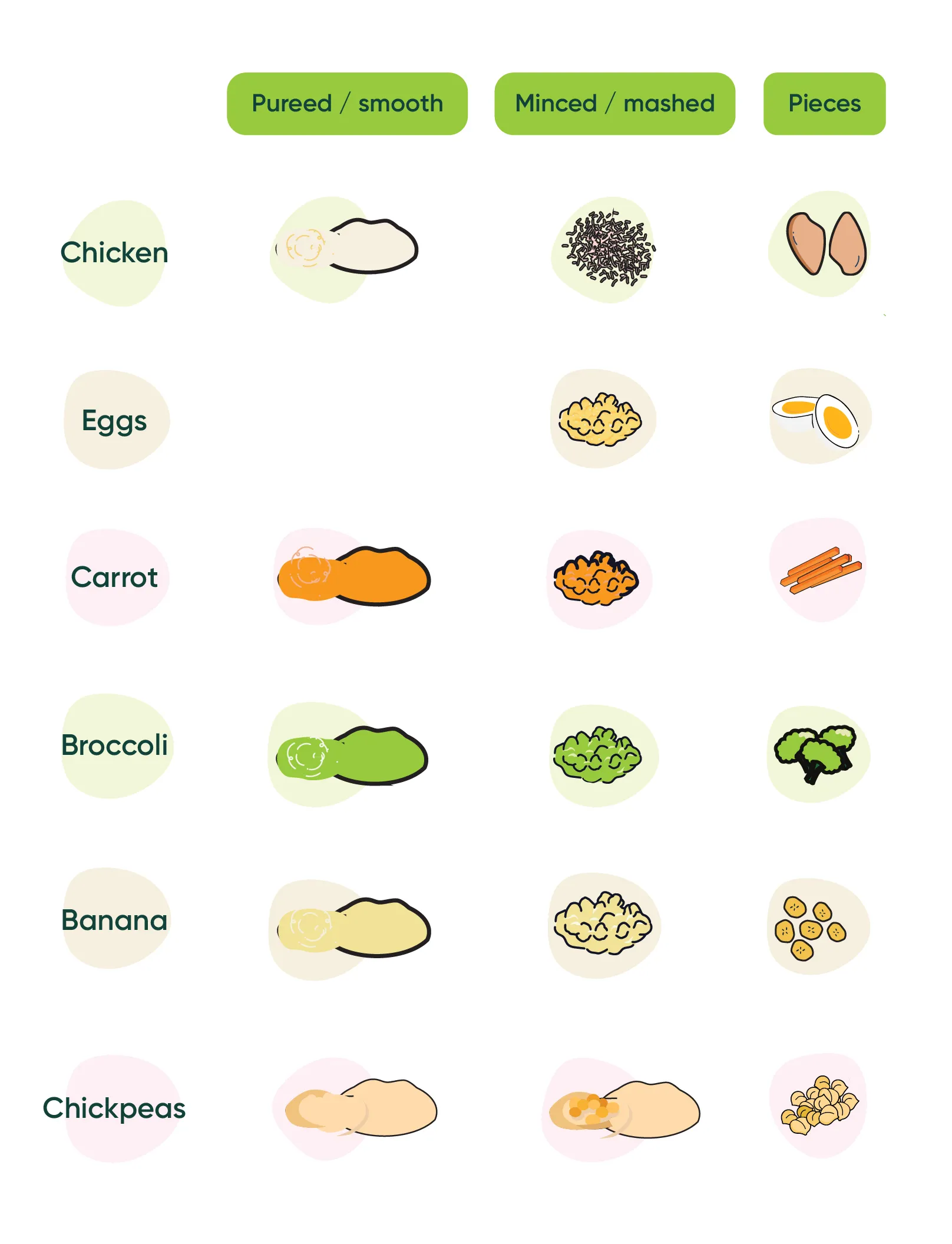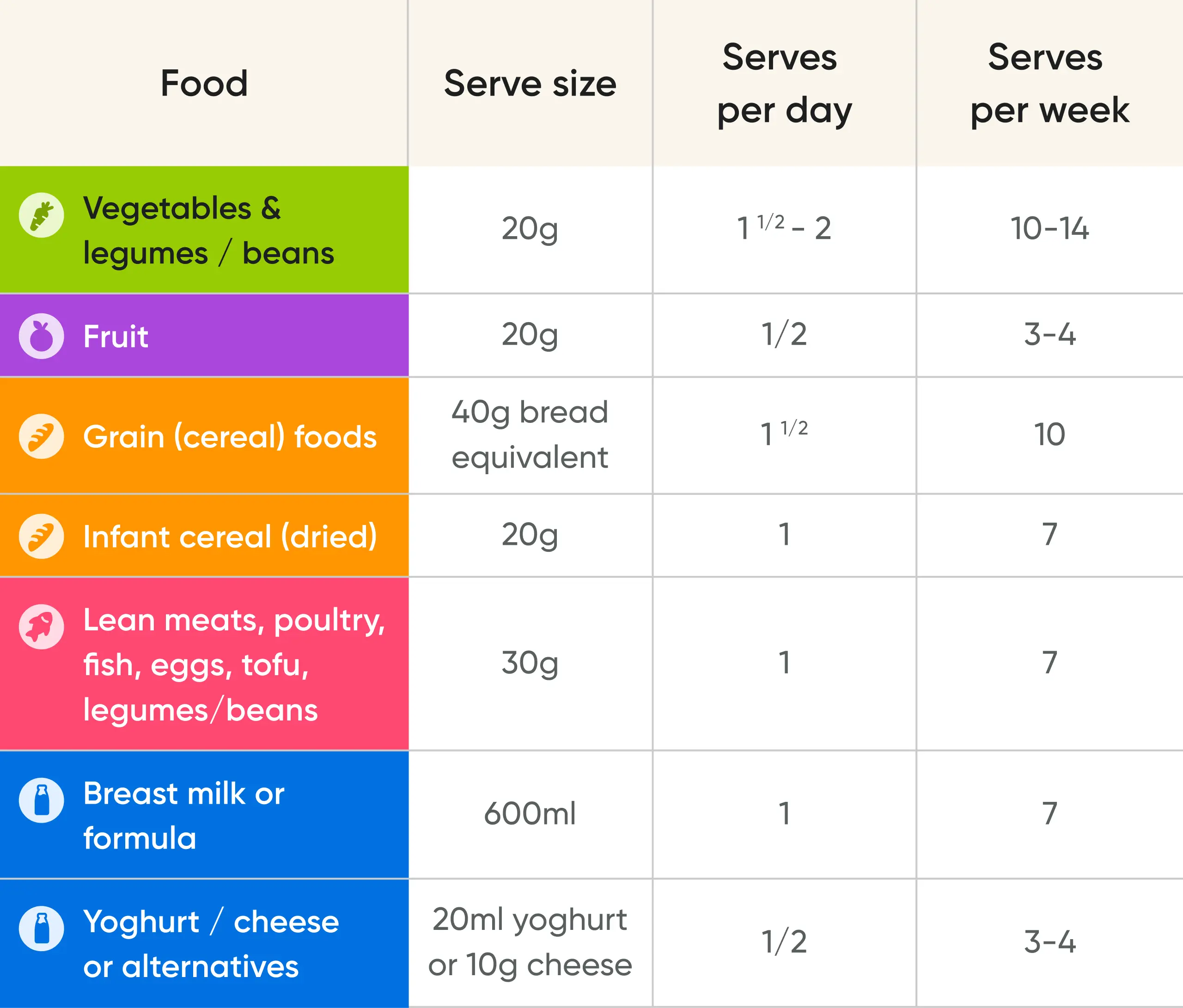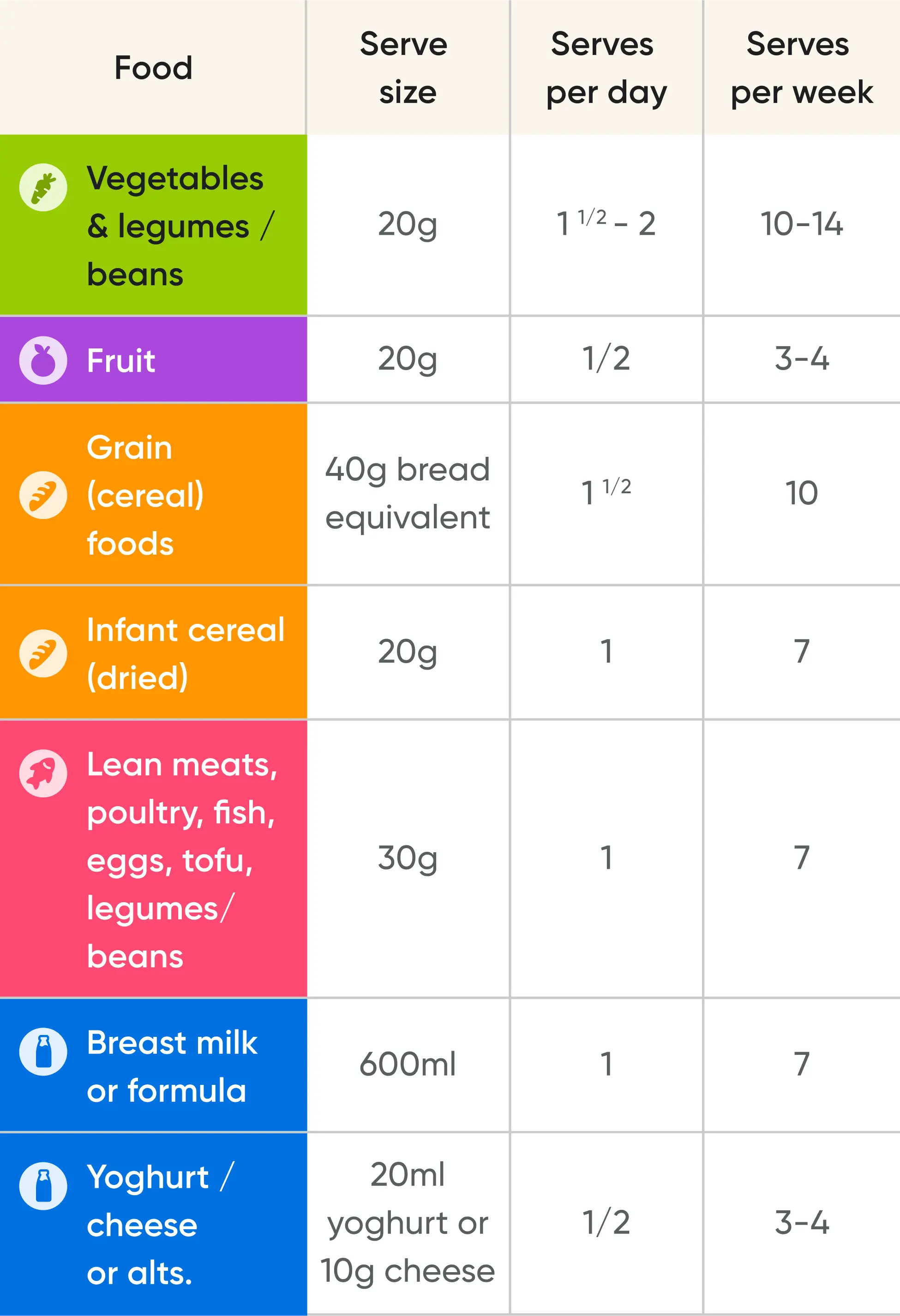When you and your infant are ready to start on solids, it can be hard to know where to begin. Which foods should you introduce? How should you feed them? Read on to learn more about the different food textures and how to help your baby transition.
Why do babies need different textures?
For the first 6 months of a baby's life, breastmilk provides all of the nutrients they need for growth and development.
Around the age of 6 months, introducing solids or semi-solids is key for ensuring they meet their nutritional and developmental requirements. This can be in the form of pureed, mashed and little pieces, depending on preference.
Between the age of 6 to 12 months, increasing variety in textures of foods is important to encourage chewing and trying new foods.
Babies should be offered a range of foods from 6 months of age onwards to meet nutritional and development requirements.
How to introduce solids to your baby?
When it comes to introducing foods, there are different methods you can use:
- Traditional weaning is when infants are first introduced to solid foods using spoon-feeding of purées. As they progress, the foods offered gradually shift towards solids and family foods.
- Baby-led weaning is when parents skip the spoon-feeding phase and wait until their infant can feed themselves with sticks of food or foods that have a natural handle. This means they can participate in family mealtimes, and pieces of food are offered to them, so they feed themselves.
- A combination of the above approaches.
What are the different textures of food?
- Smooth (for example: pureed vegetables)
- Mashed (for example: mashed hard boiled egg)
- Little pieces (for example: pieces of chicken or banana)
Simple ideas for first foods and different textures: pureed, minced and little pieces.
How to transition food textures?
Continuing variety in tastes and textures of foods is important for baby’s physical development, nutrition and to help them to learn to feed themselves. The amount of food they eat can vary day to day. Here is a rough suggested meal routine for parents and infants:
6 months:
- The aim is to introduce them to foods whilst still receiving their primary nourishment from breastmilk or formula.
- Continue milk feeds as often as your infant requires.
- In addition, offer your infant approximately two to three spoons of soft food, twice a day.
6-8 months:
- Continue milk feeds as often as your infant requires.
- Offer your infant approximately half a cup of soft food, two to three times a day.
- You can start to add snacks like mashed fruit between meals.
9-11 months:
- Continue milk feeds as often as your infant requires.
- Infants usually tolerate half a cup of food, three to four times a day plus a snack.
- Provide your infant with a variety of different foods.
How much of each food group?
The Australian Dietary Guidelines provide guidance on the amount of solid food for an infant aged 7-12 months, who is still receiving breastmilk or formula. If they finish what is offered and still seem hungry, you can offer more.
Offer a variety of foods from each food group.
What if my baby refuses food?
Sometimes strong smells, bitter tastes and the appearance of certain foods can be daunting for some little ones. If this is the case, here are some considerations:
- It can take 10-20 exposures to a food before some infants will accept it. Offering an infant a food without any pressure or expectation to eat it may help in this process.
- Include new foods with familiar foods that have already been accepted. This can take the pressure off and reassure the infant there is something they can eat and enjoy – making them feel braver about tasting something new.
- Change up the preparation: An infant may not enjoy the colour, texture, or flavour of a food. Try cutting or arranging it in a different way, combining it with another food or sauce, breadcrumbs, or herbs.
If you’re worried about your baby’s eating, growth or development, seek advice from a healthcare professional. You can also ask your doctor about Maternal and Child Health Services.
Related articles:
Article developed with Nutrition Australia.
Reviewed by Healthylife health experts July 2024.




